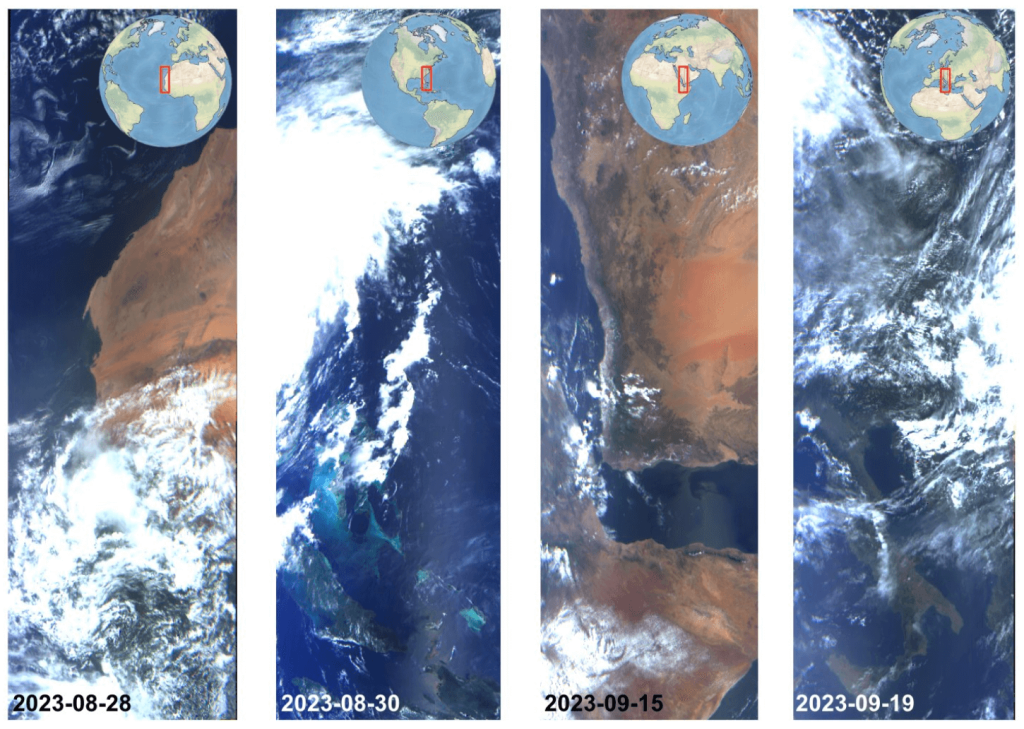The French company GRASP announced that its GAPMAP-0 instrument, launched in April 2023 on the Adler-2 satellite mission, has begun to deliver Earth observations of Earth’s atmosphere and surface. This is a significant milestone for the company as the multi-angle, multispectral polarimeter is the only privately developed payload of its kind currently acquiring Earth data. ‘This progress validates our mission and serves as a guiding light for its future,’ expressed David Fuertes, CEO of GRASP.
The technology driving this instrument was developed by Dr. Vanderlei Martins, CTO of GRASP, and his team in Maryland (USA). It draws extensively on the expertise developed by Dr. Martins and his team from their design and build of NASA’s HARP payload, and represents significant advancements in cubesat capabilities. GAPMAP empowers researchers to observe and analyze clouds and aerosols with unprecedented capability for an instrument of its size. ‘Seeing our vision materialize is very gratifying, not only for current but also for the coming results,’ remarked Vanderlei.
GAPMAP-0 is the first of a constellation of 10 cubesats scheduled for deployment between now and 2028. Each nano-satellite from the constellation will surpass conventional space radiometers, enhancing data collection with multiple viewing angles and polarization. By viewing each Earth scene with 60 measurements – 4 wavelengths by 5 viewing angles by 3 polarization states – that are processed through GRASP’s algorithm, it will provide high quality retrieval of atmospheric particulates, clouds and surface properties. ‘We are confident that by using our GRASP software platform we can synergistically combine data from the GAPMAP constellation, publicly available satellite data, ground-based measurements and climate models to provide invaluable products monitoring the Earth” states Dr. Oleg Duvobik, co-founder of GRASP, who actively contributes to the scientific advancement of the company alongside his research career.
The goal of the constellation will be to provide real time data about atmospheric particles having an impact on air quality, climate and human activities. Public and private customers will benefit from its use. ‘This is the completion of a first step of a long journey that would not have been possible without public support,’ stated Dr. David Fuertes the GRASP CEO. ‘The fact that public institutions like CNES have already purchased GAPMAP-0’s data proves the interest of our contributions to the scientific community and to the public at large’. The support received from public institutions like CNES, ESA, NASA and EUMETSAT is essential for private companies from the New Space Earth Observation sector to create tangible products that will help end users meet their needs. One beneficiary of GAPMAP information will be emitting industries who will use space-based monitoring of polluting particle emissions.
With the success of its first mission, GRASP will move forward in fully outfitting its multi-platform constellation of small satellites with GAPMAP sensors. When fully deployed, polluting industries will gain critical tools for monitoring their environmental impact that will align with new Environmental, Social and Governance (ESG) compliance standards mandated by future smart cities and municipalities. As GAPMAP mission advances on aerosol research, the scientific community plans ahead applying them on affected urban areas that are most needed by climate action. ‘With the first data acquired, we will soon start transferring our efforts from scientific research to real use cases in the most affected urban areas and observe the impact on society’ states Lorraine Remer, GRASP executive scientific officer and Research professor at Maryland University.
Source: GRASP






